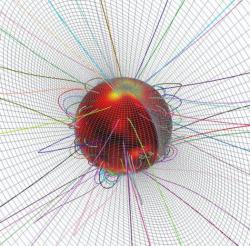A European Racers Perspective of our V8 Supercars
When you put it like this, I understand why we (Aussies) are so passionate. They (V8Supercars) really are the anti-thesis of the 21st century racecar, but boy they rub, race, and make one hell of a beautiful din. I have seen F1, CART, NASCAR, V8 Supercars, TOCA toys..., and many other categories. And they still win, with huge weights, huge Horsepower, and still only 1000ths of a second between positions, and drags to the finish line normal...
Well I love 'em, read on...
Technorati Tags: V8 Supercars, DTM, F1, BTCC, TOCA, GM, Ford, Motorsport
Well I love 'em, read on...
If the DTM is touring car racing at its nimblest and highest level of technology, then Australian V8 Supercars are its opposite: big, heavy, loud and stupidly powerful, the “Aussie V8s”, as their commonly known, truly are the “Thunder from Down Under.”
And, in what is already a winter tradition, you can watch it all on SPEED, along with the DTM (click here for story) [28] and the BTCC.
Unlike a DTM car, which is built from a carbon-fiber tub, or even a NASCAR racer with its purpose-built tubeframe chassis, V8 Supercar machines originate from production-based unibody chassis, heavily reinforced to sustain the rigors of some of the world’s toughest races, like the famed Bathust 1000.
That type of construction brings on the problem of excess mass: the Ford Falcon and Holden Commodore, the two traditional V8 rivals, tip the scales at almost 1.5 tons once the driver and fuel are added.
To tackle that issue, a very Australian solution was chosen – just add power. Aussie V8s are the most powerful road-racing touring cars in the world, developing circa 650 horsepower from its 5.0-liter mills, not to mention torque that could bend the asphalt (with engines limited to just 7,500 revs, low-end grunt is a must in the series).
The 2006 season was one of the most competitive in recent years. After losing its biggest star, Marcus Ambrose, to the NASCAR Craftsman Truck Series, the title battle went down to the wire, with 23-year-old Rick Kelly taking the crown by beating series veteran Craig Lowndes (a three-time champion who was also the runner-up in ’05) in a controversial season finale at Phillip Island, when the duo collided and Lowndes was sent off-track. Kelly got a drive-through for the incident, but still managed to finish ahead of his rival.
The Bathurst 1000 at Mount Panorama provides one of the toughest challenges in all of racing. (LAT Photo)
The 13-race schedule saw an international stop this season, the Desert 400 in Bahrain, on the same circuit that hosts Formula 1’s Bahrain Grand Prix. The highlight of the V8s calendar, however, remains the classic Bathurst 1000, a long-distance race in the circuit with some of the biggest elevation changes in all of racing, appropriately nicknamed the “Mountain” – the track’s official name is Mount Panorama.
The Bathurst 1000 attracts drivers from other disciplines, as squads need to add a second man to each entry. IndyCar and Champ Car driver Ryan Briscoe was one of the invited guests this season, which also saw former Champ Car man Marcus Marshall make his first full-time Supercars campaign (he finished 29th in points). But the Bathurst race was marked by tragedy too, when New Zealand driver Mark Porter was killed in the Fujitsu V8 support event.
Another unique trait of the series is the fierce rivalry between Holden (a GM subsidiary) and Ford, one that extends to the fans, a fixture long lost in NASCAR, for instance. Most V8 fans are staunch supporters of one of the two manufacturers and won’t root for a driver of the rival brand.
With large fields, great road-racing venues, big V8 power and plenty of doorhandle-rubbin’, the V8 Supercars are must-see racing for all types of fans.
Technorati Tags: V8 Supercars, DTM, F1, BTCC, TOCA, GM, Ford, Motorsport
powered by performancing firefox









No comments:
Post a Comment